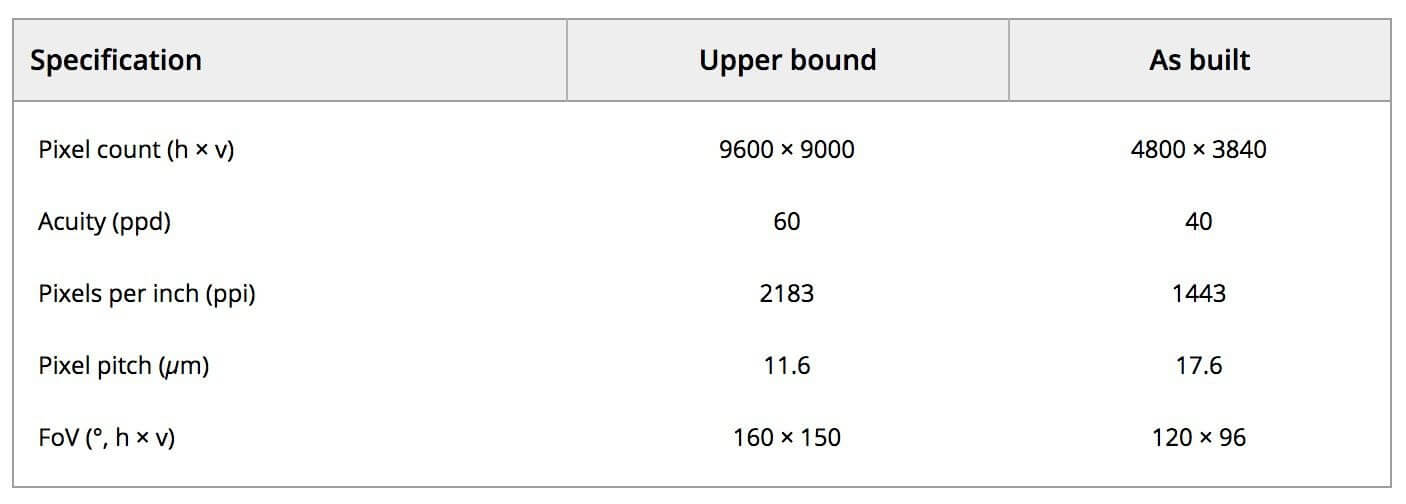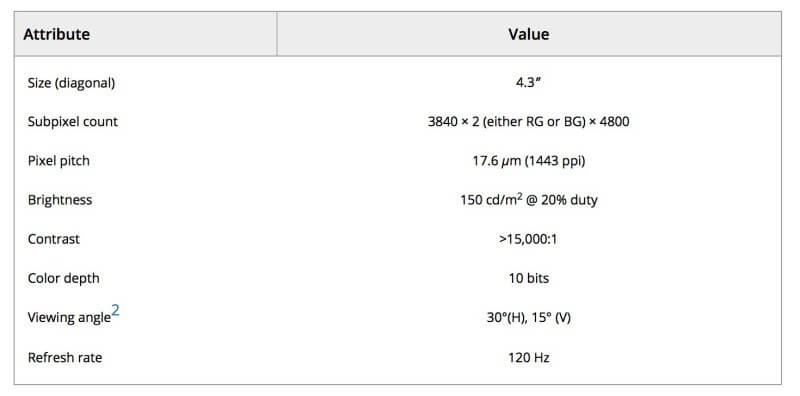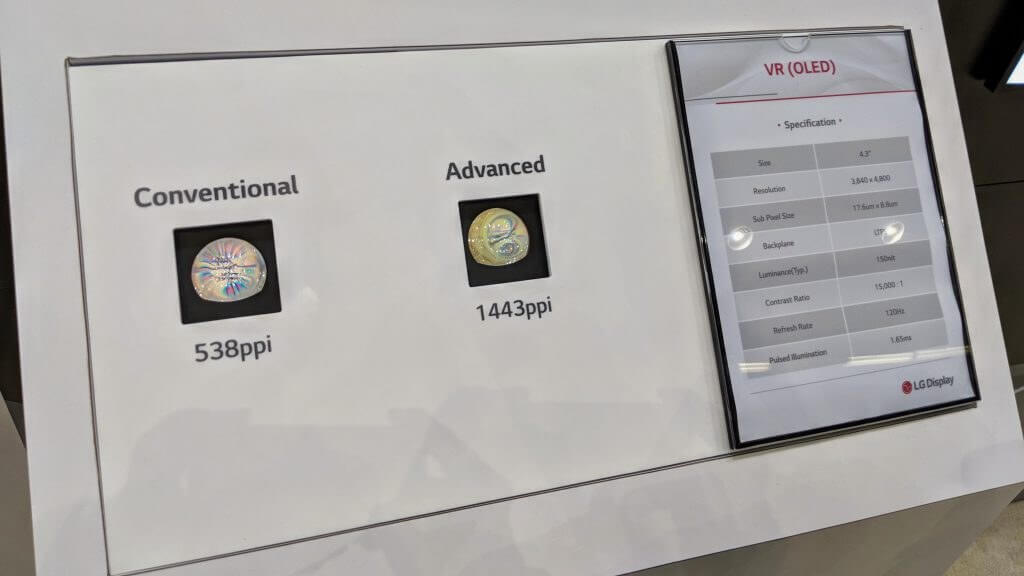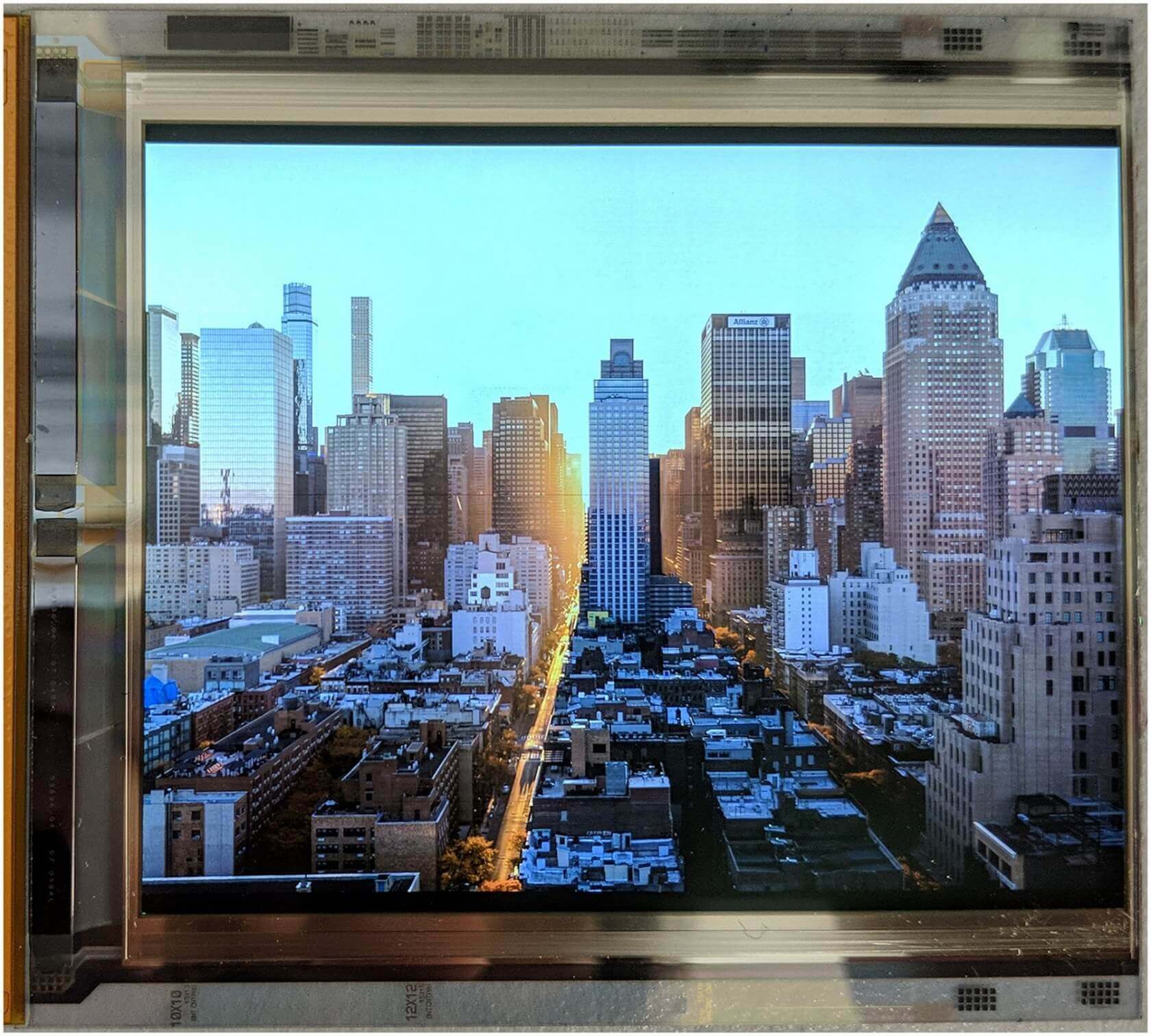The current generation of virtual reality headsets have been around for a couple of years now, but they still aren't as popular as many expected. A project unveiled by Google and LG, however, could give both VR and AR a much-needed shot in the arm: a 4.3-inch OLED display that boasts 1443 pixels per inch and a 120Hz refresh rate.
Unveiled at the Display Week 2018 expo, the panel, which has a 4,800 x 3,840 (18MP) resolution and 120 x 96 field of view, is designed to be used in pairs with one screen covering each eye. Google says this is the "world's highest-resolution OLED on glass display panel."
The OLED is certainly an improvement over what current PC-powered VR headsets offer. The HTC Vive's 3.6-inch screens have a 1080 x 1200 resolution with 448ppi, while the high-end Vive Pro uses 3.5-inch 1440 x 1600 displays at 615ppi. A research paper notes that the upper bound of human vision is 9600 x 9000 and a FOV of 160 x 150.

"The design uses a white OLED with color filter structure for high density pixelization and an n‐type LTPS backplane for faster response time than mobile phone displays," wrote the researchers.
In addition to featuring a custom driver integrated circuit, the display uses foveated rendering, which only renders what the user is looking at in 4,800 x 3,840 while everything around that point appears in a lower resolution. It also features 150 cd/m2 @ 20% duty brightness, >15,000:1 contrast, and 10-bit color depth.

Google said that while the screens do support 120Hz, the limitations of a mobile SoC might mean that they will run at 75Hz on mobile VR headsets.
It's unclear exactly how long it will take for the displays to hit the market. But when they do finally arrive, we could see VR and AR become a lot more popular.

